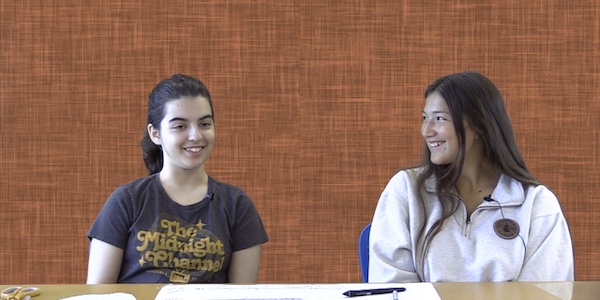Two students, Mary and Claire, investigate angle measure and the sine function. They begin by investigating how to measure angles in a variety of ways. They explore how to measure these angles in degrees, non-standard units, and radians. Next, they investigate the sine function. They explore how the function relates two quantities as they co-vary, and how to graph the function. Finally, they investigate how to manipulate the graph of the sine function to model climate data.
Lesson 1: Measuring Angle Openness
Mary and Claire explore what it means for one angle to be more open than another. They also investigate how to measure that openness using both degrees and non-standard units.
Lesson 2: Making Sense of Angles as Rotations
Mary and Claire explore how to create and measure angles that represent the amount an object has rotated. They measure the angles using both degrees and a non-standard unit of measure. They then reflect on what those measurements mean in terms of the rotation.
Lesson 3: Investigating the Relationship between Arc Length and the Angle of Rotation
In this lesson, Mary and Claire investigate the relationship between an angle measure and the length of the arc that it cuts out in a circle
Lesson 4: Measuring Angles Using Radians
In this lesson, the students will explore the radian as a unit of measure. They will estimate the measure in radians of arcs, and also help us think about the connection between radians and degrees.
Lesson 5: Exploring Covariation on a Unit Circle
In this lesson, Mary and Claire think about how an object’s height changes in relation to its angle of rotation as it moves along a circular path. They also explore what happens to the changes in height as the object moves. They explore how this relates to circular motion along different sizes of circles.
Lesson 6: Creating a Graph of the Sine Function
In this lesson, Mary and Claire develop a graph of the sine function. They grapple with how to scale the x- and y-axes so they can show the relationship between an object’s angle of rotation and its height above the midline of a circle as it travels along the circumference of that circle.
Lesson 7: Transforming the Sine Function
In this lesson, Mary and Claire modify the sine function to give the height above the ground of a student named April as she travels on a Ferris wheel.
Lesson 8: Modeling Climate Data with a Sinusoidal Function
In this lesson, Mary and Claire transform the sine function using sliders to model temperature data. They use their models to predict future patterns in temperature.

